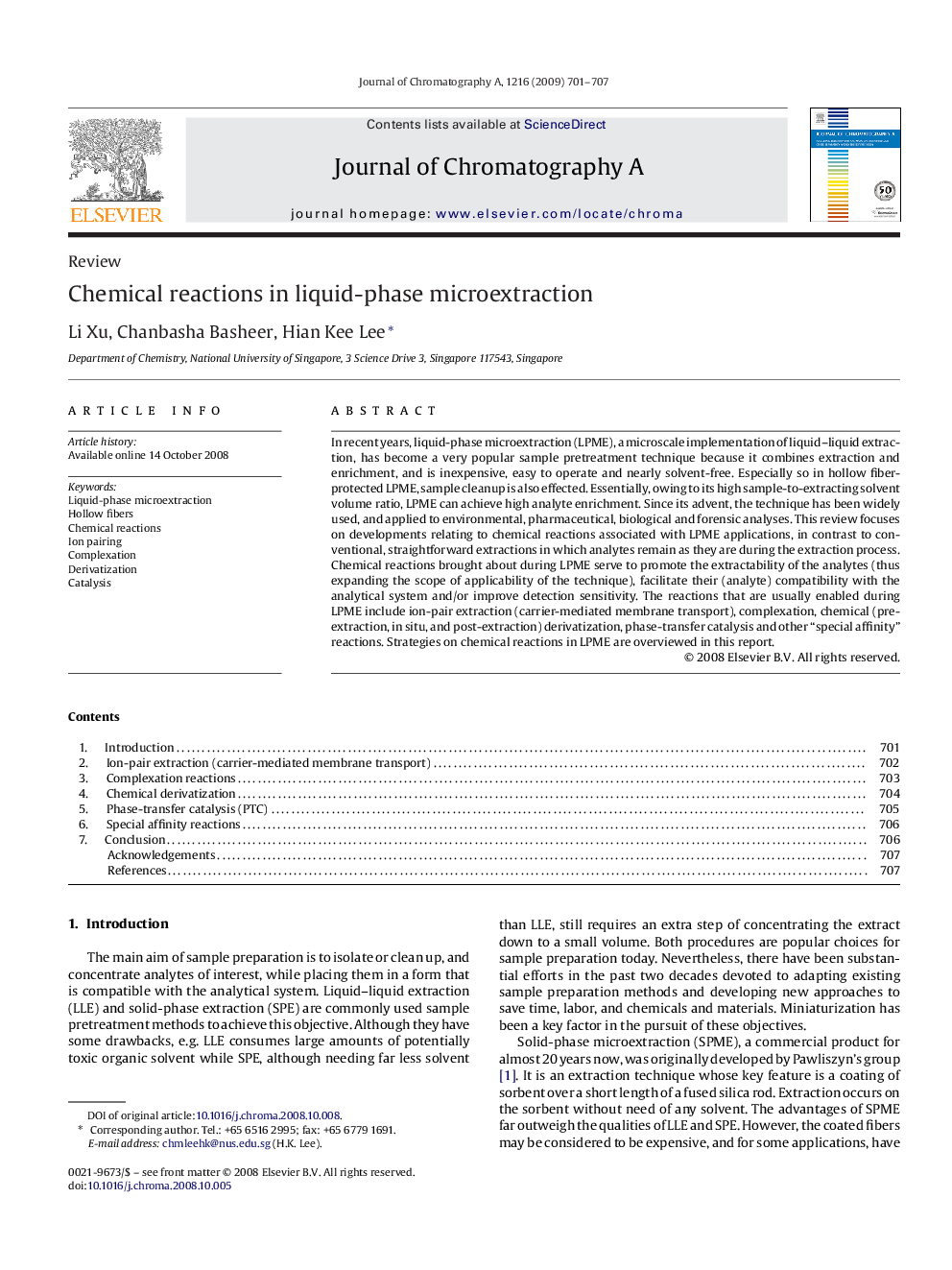| Article ID | Journal | Published Year | Pages | File Type |
|---|---|---|---|---|
| 1204722 | Journal of Chromatography A | 2009 | 7 Pages |
In recent years, liquid-phase microextraction (LPME), a microscale implementation of liquid–liquid extraction, has become a very popular sample pretreatment technique because it combines extraction and enrichment, and is inexpensive, easy to operate and nearly solvent-free. Especially so in hollow fiber-protected LPME, sample cleanup is also effected. Essentially, owing to its high sample-to-extracting solvent volume ratio, LPME can achieve high analyte enrichment. Since its advent, the technique has been widely used, and applied to environmental, pharmaceutical, biological and forensic analyses. This review focuses on developments relating to chemical reactions associated with LPME applications, in contrast to conventional, straightforward extractions in which analytes remain as they are during the extraction process. Chemical reactions brought about during LPME serve to promote the extractability of the analytes (thus expanding the scope of applicability of the technique), facilitate their (analyte) compatibility with the analytical system and/or improve detection sensitivity. The reactions that are usually enabled during LPME include ion-pair extraction (carrier-mediated membrane transport), complexation, chemical (pre-extraction, in situ, and post-extraction) derivatization, phase-transfer catalysis and other “special affinity” reactions. Strategies on chemical reactions in LPME are overviewed in this report.
